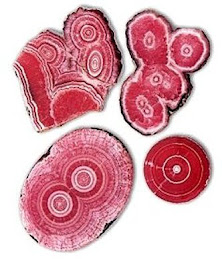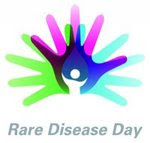sábado, 30 de abril de 2022
viernes, 29 de abril de 2022
jueves, 28 de abril de 2022
Federal Register :: Medicare Program; Hospital Inpatient Prospective Payment Systems for Acute Care Hospitals and the Long-Term Care Hospital Prospective Payment System and Policy Changes and Fiscal Year 2022 Rates; Quality Programs and Medicare Promoting Interoperability Program Requirements for Eligible Hospitals and Critical Access Hospitals; Changes to Medicaid Provider Enrollment; and Changes to the Medicare Shared Savings Program
miércoles, 27 de abril de 2022
domingo, 24 de abril de 2022
NOTICIA A LECTORES Y SEGUIDORES
Durante varios días el blog "SALUD EQUITATIVA" no se actualizará... gracias por vuestra comprensión...
sábado, 23 de abril de 2022
viernes, 22 de abril de 2022
jueves, 21 de abril de 2022
Announcing the Release of Papilloma Virus Episteme (PaVE) 2.0
Announcing the Release of Papilloma Virus Episteme (PaVE) 2.0
The NIAID Bioinformatics and Computational Biology team and Alison McBride, Ph.D. Chief, DNA Tumor Virus Section at Laboratory of Viral Diseases have worked together to launch PaVE 2.0.
About PaVE
The Papilloma Virus Episteme (PaVE) was initiated by NIAID in 2008 to provide a highly curated bioinformatic and knowledge resource for the papillomavirus scientific community (https://pave.niaid.nih.gov). PaVE rapidly became the “go-to” resource for papillomavirus researchers worldwide because of its trusted and seamless integration of the data and the analytical tools. Contributions to the database and curation are provided by the scientific staff of NIAID and by researchers at the University of Arizona. Since its inception, PaVE has been accessed by >44,000 individual users in 151 countries around the world. The PaVE URL has been cited >620 times in Google Scholar and consistently has 40-50 users per day.
For the last 14 years, PaVE has been a steadfast and invaluable resource. Yet, behind the scenes the software infrastructure became severely outdated. In PaVE 2.0, the underlying libraries and hosting platform of PaVE have been completely upgraded and rebuilt because the original software framework has been deprecated. The PaVE 2.0 team researched and developed open-source cloud-based pipelines for continuous integration and deployment (CI/CD) of both applications and data. PaVE 2.0 is hosted on an on-demand virtual server using the infrastructure-as-code NIAID “Monarch” tech stack. The framework has been upgraded to Python Flask with a JavaScript/JINJA template front end and the database switched from MySQL to Neo4j. A Swagger application programming interface (API) performs all database queries, and executes jobs for BLAST, MAFFT, and the custom L1 typing tool developed specifically for PaVE. The API will also allow potential future programmatic access to the data.
All major tools in PaVE 2.0 such as search using BLAST, L1 typing tool, Locus Viewer, phylogenetic tree generation and viewer, multiple sequence alignment, protein structure viewer have been modernized and enhanced to make it robust and be able to support more users. For example, the new Celery distributed task queue supports longer running tasks (such as large BLAST jobs and the L1 typing tool). Multiple sequence alignment will now use MAFFT instead of CLUSTAL. The protein structure viewer has been upgraded from Jmol to Mol*, the new embeddable viewer used by the Protein Data Bank.
As a new feature, we added the 3D Viewer to explore inside the virion in 3D.
Check out PaVE 2.0 by visiting https://pave.niaid.nih.gov/
About human papillomavirus (HPV)
Five percent of human cancers are due to human papilloma virus (HPV) infection; oncogenic HPV infection is the causative agent of almost all cervical carcinomas, and over 70% of oropharyngeal cancers. In the US, the incidence of HPV-associated oropharyngeal cancer currently outnumbers that of cervical cancer, but cervical cancer causes ~0.34 million deaths globally each year. HPV infection also results in clinical outcomes ranging from asymptomatic infection to verrucae, plantar and filiform warts, and condylomata acuminata. HPV infection is particularly problematic with acquired (e.g., HIV infection or organ transplantation) or inherited immunodeficiencies. Many of these HPV-associated diseases are studied in NIAID, NCI, and other NIH institutes. Although HPV vaccines are currently available for nine HPV types, HPV-associated disease will continue to be a major health burden for many decades to come.
To date, over 440 different human papillomavirus (HPV) types have been identified. Each type is trophic for a specific anatomical niche in the stratified epithelium of the skin or mucosa. Some HPV types are oncogenic, while others cause asymptomatic infection and can be considered part of the human microbiome. The genomic and derived protein sequences of these viruses provide a treasure trove of data for comparative genomics.
miércoles, 20 de abril de 2022
martes, 19 de abril de 2022
lunes, 18 de abril de 2022
domingo, 17 de abril de 2022
sábado, 16 de abril de 2022
viernes, 15 de abril de 2022
jueves, 14 de abril de 2022
2022 Innovation Day & Sentinel Public Training, April 28 - 29 | Sentinel Initiative
2022 Innovation Day & Sentinel Public Training, April 28 - 29 | Sentinel Initiative
The 2022 Sentinel Innovation Day and Public Training Takes Place April 28-29
2022 Sentinel Innovation Day and Public Training
April 28 – 29, 2022
Day 1: Thurs., April 28 | 11:00 AM – 2:00 PM ET
Day 2: Fri., April 29 | 9:00 AM – 1:00 PM ET
This virtual event is free. Register here.
The U.S. Food and Drug Administration’s Sentinel Initiative is hosting the 2022 Sentinel Innovation Day and Public Training virtually on April 28 and 29, 2022. Participants can attend one or both events, and should register for each event separately. A recording of the training and all related materials will be posted to the Sentinel website after the events.
Innovation Day: On April 28, the Sentinel Innovation Center will focus on challenges and opportunities in integrating electronic health record-based data in common data models, computable phenotyping to aid medical product safety investigations, advanced analytic approaches to improve confounding adjustments in Sentinel investigations, and a causal inference framework for Sentinel.
13th Annual Sentinel Public Training: On April 29, the Sentinel Operations Center will focus on Inverse Probability of Treatment Weighting (IPTW), an analytic method that can reduce confounding bias in observational studies of medical treatments. Investigators from the Sentinel Operations Center will discuss the opportunities presented by inverse probability weighting, the new IPTW tool within the Sentinel Routine Querying System, and how researchers can conduct analyses of routinely collected electronic health data in the Sentinel Common Data Model format.
The Sentinel System is a national electronic system for medical product safety surveillance. Mandated by the FDA Amendments Act, the Sentinel Initiative established the system in collaboration with public, academic, and private entities, as a method to obtain access to disparate data sources and validate methods to establish a system to link and analyze safety data from multiple sources. Sentinel has the largest multisite distributed database in the world dedicated to medical product safety.
miércoles, 13 de abril de 2022
martes, 12 de abril de 2022
lunes, 11 de abril de 2022
domingo, 10 de abril de 2022
Suscribirse a:
Entradas (Atom)






























